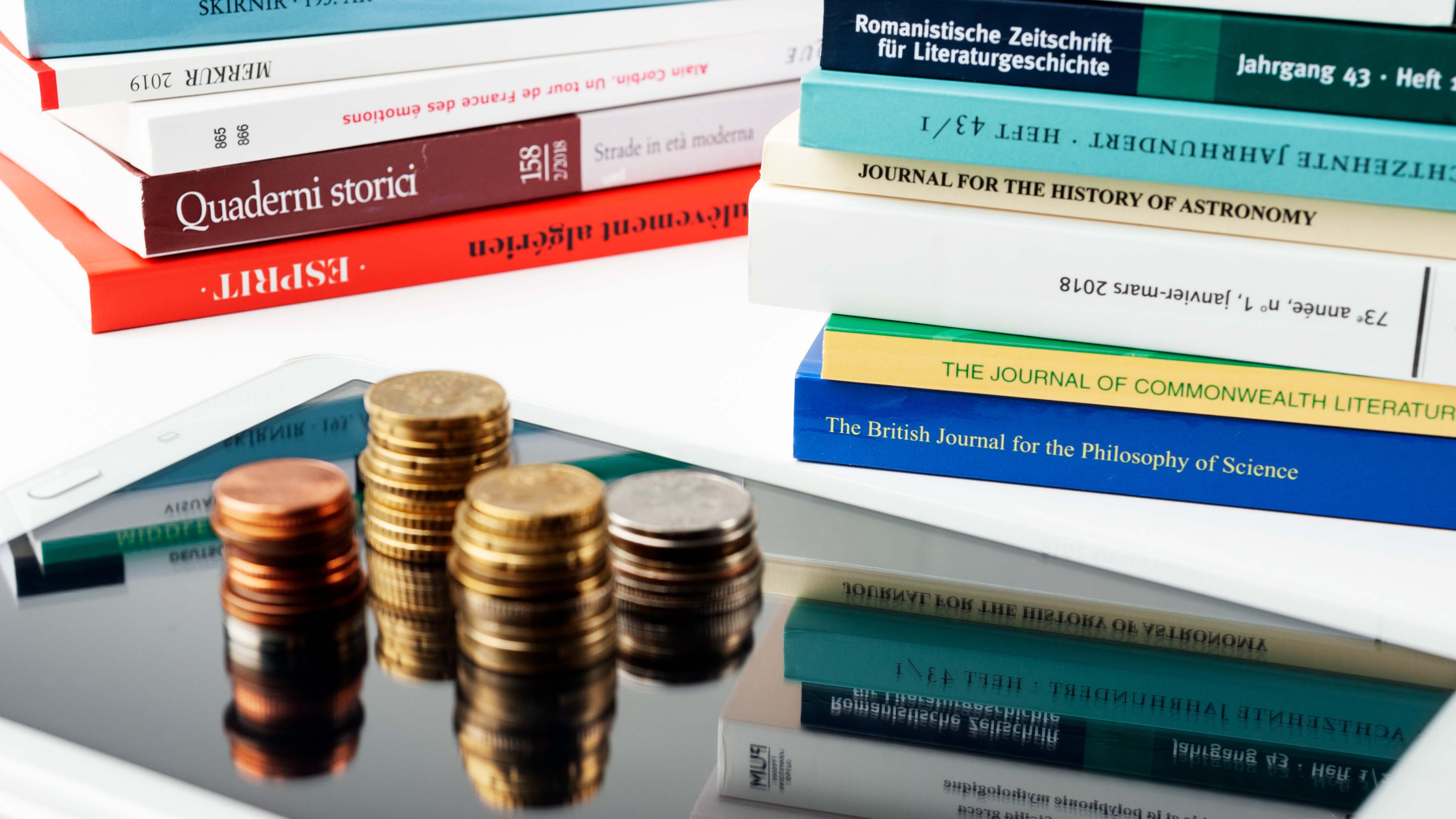Costs of scholary publishing 2022
The National Library monitors Swedish higher education institutions’ expenditures for scholarly literature and open access publishing in Sweden. For 2022, expenses amounted to SEK 738 million, which is an increase of 3.7% from the previous year.

Photo: The National Library/Maja Atterstig
The Swedish government has commissioned the National Library of Sweden (Kungliga biblioteket, KB) to promote and coordinate the work for open access to scholarly publications. The goal is for all such publications to be available on the internet, free for everyone to read and reuse. During the transition to an open science system, KB is monitoring and reporting which investments are made, how large they are, the spread between different expenditure items and how they are distributed among the universities. This year's report, covering the 2022 expenditures on scholarly publishing, is now available.
Increase of costs for Swedish universities
The expenses for scholarly publishing amounted to approximately SEK 738 million in 2022, which is an increase of SEK 27 million or 3.7 % compared to last year. A large part of the higher education institutions' expenses are linked to agreements with commercial publishers, and these generally have annual price increases. Changes in the value of the Swedish currency in relation to the currencies in which the agreements are signed have also affected the increase.
According to the Swedish Higher Education Authority (UKÄ), the revenue for research and third-cycle education to universities and university colleges was SEK 49.5 billion in 2022, which means that the expenditures on scholarly publishing is equivalent to 1.5 per cent of revenue which is the same as last year.
For some research-intensive universities, the spending increased by more than 3.7%. This is as a result of the so-called transformative* agreements signed via the Bibsam Consortium, where costs are redistributed with the transition from reading fees to article processing charges so that the universities that publish the most also account for a larger share of the expenses.
* The purpose of transformative agreements is to redirect the payment flows from a subscription-based model to a system of open access publishing.
Increased number of open access publications
The number of transformative agreements signed through the Bibsam Consortium has steadily increased in recent years, from three in 2017 to 27 in 2022. This has meant that the expenses have grown from SEK 35 million in 2017 to SEK 408 million in 2022. The number of subscription agreements that only include reading rights is decreasing at a corresponding rate. These expenses have decreased from SEK 254 million in 2017 to SEK 19 million in 2022.
Swedish research publishing is in a transitional phase in which an increasing number of recently published publications are made immediately open access. It is estimated that around 16,000 open access articles were paid for in 2022 via the Bibsam Consortium's transformative agreement and other agreements with open access publishers. This is an increase of approximately 2,100 articles compared to 2021.
Development over the last six years
This is the sixth year (2017–2022) that KB has compiled the total expenses for scholarly publishing in Sweden. During this period, the reported expenses have increased from approximately SEK 500 million to approximately SEK 738 million. In 2017, these expenses amounted to approximately 1.2 per cent of the total revenue for research and third-cycle education to universities and university colleges, and in 2022, this percentage had increased to 1.5 per cent.
More statistics and analyses
- Cost of scholarly publishing 2022 – tables and diagrams
- Only the first report, covering 2017, is available in English. It includes the methodology, and a background is also presented – Expenditure on scholarly publishing 2017 (pdf)
 External link.
External link. - More information on the National Library of Sweden’s assignment to promote and coordinate the work for open access to scholarly publications
Contact
Henrik Schmidt, Open Access team at the National Library of Sweden
henrik.schmidt@kb.se
010-709 32 65
Vill du ha fler nyheter från KB?
Under Prenumerera på Nytt från KB kan du välja de områden som intresserar dig. Du kan också följa oss på Linkedin External link..
External link..
